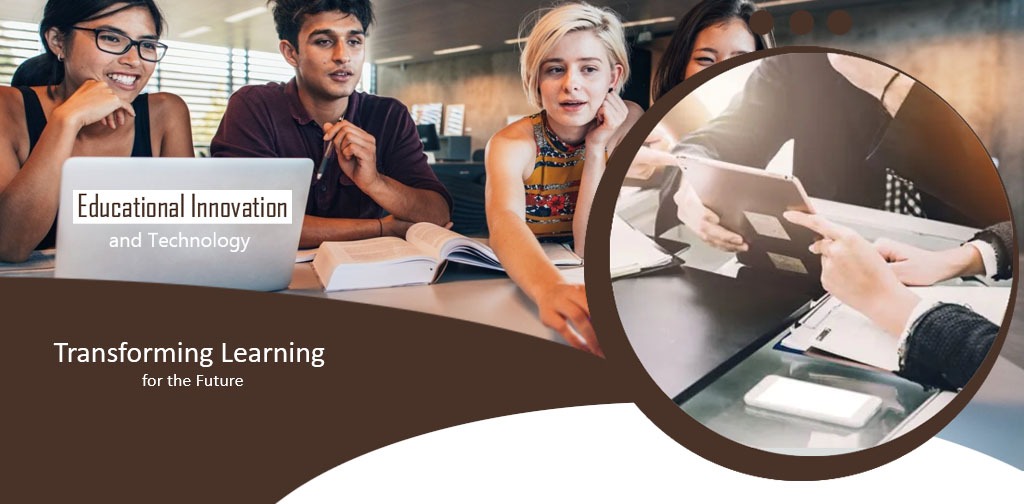Introduction
Technology and innovative teaching practices are essential to determining the
direction of education at a time of swift technological progress and shifting
social demands. Here at Guinness Press, we investigate how these innovations
are revolutionizing education and demonstrating how they improve accessibility,
enrich learning opportunities, and get students ready for the challenges of the
twenty-first century. This blog explores the major developments and innovations
in education that are influencing teachers, learners, and society as a whole.
The Development of Technology in
Education
Tech, or educational technology, is the umbrella term for a broad range of
instruments and methods intended to enhance the processes of teaching and
learning. Technology has continuously changed education, starting with the
invention of the chalkboard in the 19th century and continuing with the spread
of digital learning platforms today.
Important Developments in Educational
Innovation
1. Online and Blended Learning: With their ability to provide flexible and
individualized learning experiences, online and blended learning models have
become increasingly popular. These models let students access course materials
and finish tasks at their own pace by fusing traditional classroom education
with online components.
Benefits: Flexibility for students
with different commitments and schedules.
access to a vast array of materials and knowledgeable teachers from around the
globe.
Possibilities for individualized education.
As an
illustration, the popularity of Massive Open Online Courses (MOOCs) on websites
like Coursera and EDX has made it easier for millions of students to get a
top-notch education and expand their knowledge and skill sets.
2. Adaptive Learning Technologies: These technologies tailor each
student's learning experience by using data and algorithms. These systems adapt
the pace, material, and level of difficulty according to the needs and
performance of the student.
Advantages: Personalized learning opportunities that address each person's
advantages and disadvantages.
increased student
participation and performance with tailored assistance.
Real-time evaluations and comments.
As an
illustration, Newton's adaptive learning platform makes use of data analytics
to offer students customized learning pathways that facilitate better concept
mastery.
3. Gamification: To improve motivation and engagement,
gamification adds elements of game design to educational activities.
Gamification increases the enjoyment and immersion of learning through the use
of incentives, challenges, and interactive components.
Advantages:
Higher engagement and motivation among students.
improved
comprehension and recall of difficult ideas.
Growth in
analytical reasoning and problem-solving skills.
As an
illustration, the language-learning program Duolingo employs gamification to
incentivize users to practice frequently by giving them badges, levels, and
points.
4. Virtual and Augmented Reality
(VR/AR):
By mimicking real-world settings and enhancing them with interactive features,
VR and AR technologies produce immersive learning experiences. Virtual field
trips and medical training simulations are only two of the educational contexts
in which these technologies might be employed.
Advantages: Increased involvement and hands-on education.
Real-world scenario simulation that is both economical and safe.
enhanced practical abilities and spatial comprehension.
As an illustration, Google Expeditions offers students an immersive learning
environment by enabling them to go on virtual field trips to historical
locations, underwater habitats, and even space.
5. Artificial Intelligence (AI) and
Machine Learning: By automating administrative processes,
delivering sophisticated teaching systems, and analyzing data to enhance
educational outcomes, AI and machine learning are transforming education. These
tools improve learning by providing insights and individualized support.
Benefits: Tailored feedback and instruction.
Effective handling of administrative responsibilities.
data-driven insights to guide curriculum development and instructional methods.
For instance, students can receive individualized help from Carnegie Learning's
AI-powered math tutoring system, which adjusts to their unique learning
preferences and offers focused guidance.
Consequences for
Teachers and Students
1. Changing Roles of Teachers: As a result of technology integration, teachers'
roles are changing from traditional lectures to mentors and facilitators.
Currently, teachers assist kids in using digital resources, encouraging
critical thinking, and acquiring digital literacy abilities.
2.
Increased Student Engagement: Thanks to technological advancements, education
is now more participatory and interesting. Students who use resources tailored to their interests and learning preferences are more likely
to remain engaged and motivated in their studies.
3. Enhanced Inclusivity and Accessibility: Educational technology can benefit students who live in rural or underdeveloped locations by filling gaps in educational possibilities. Furthermore, assistive technology guarantees a more
inclusive learning environment by providing support to students with
disabilities.
4. Opportunities for Lifelong Learning: Online learning systems' adaptability
and accessibility encourage lifelong learning. Throughout their lives, people
might keep learning new things to help them adapt to shifting work markets and
hobbies.
Obstacles and Things to Think About
Although
instructional technology has many advantages, there are drawbacks as well.
These include tackling the digital gap, preserving data security and privacy,
and guaranteeing fair access to technology. Together, educators and legislators
must develop frameworks that optimize EdTech's advantages while reducing any
hazards.
The Prospects for Innovative Education
Innovation in pedagogy and ongoing technological breakthroughs will define
education in the future. Teachers can establish inclusive, dynamic learning
environments that equip students for the complexity of the modern world by
embracing these developments.
Conclusion
Technology and innovation in education are changing the face of education and
providing never-before-seen possibilities for individualized, interesting, and
accessible learning. Guinness Press is dedicated to investigating and advancing
the newest innovations in technology and trends that support high standards in
education. By remaining informed and flexible, teachers and students may leverage the power of innovation to build a more promising and inclusive future for education.
